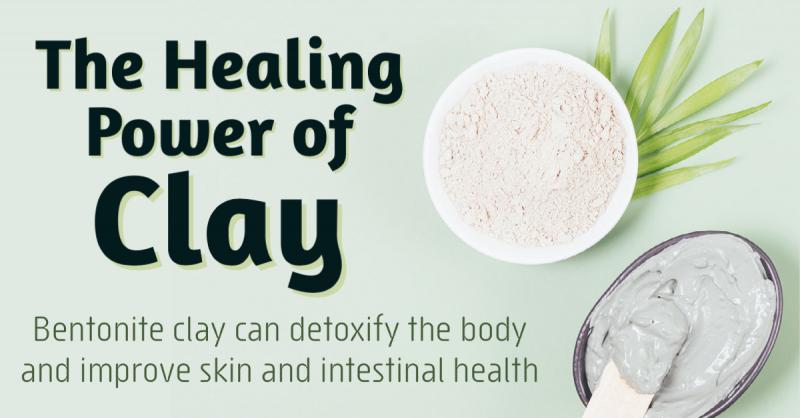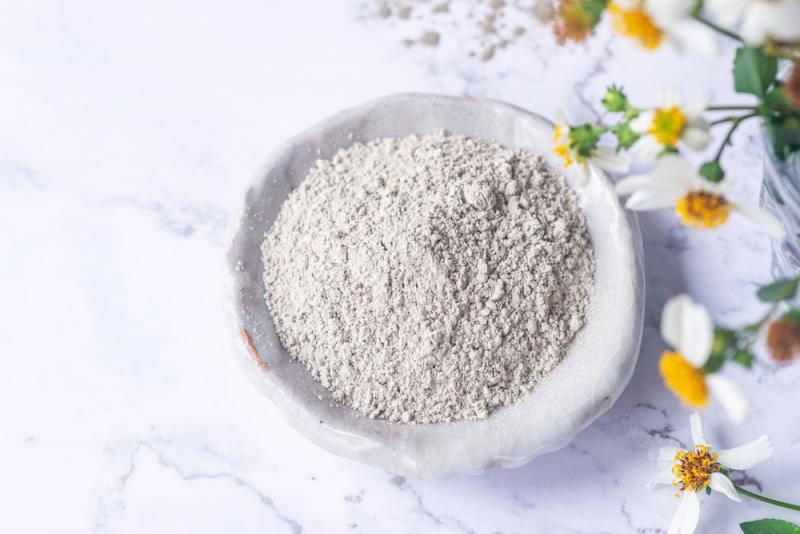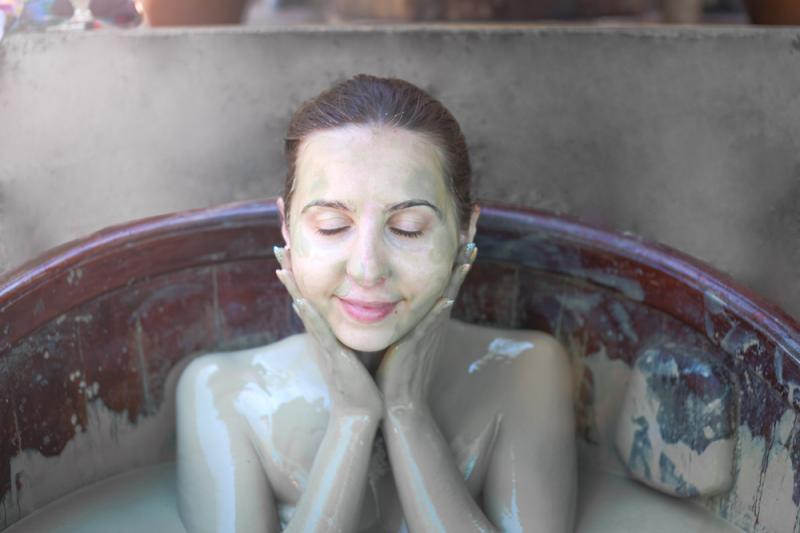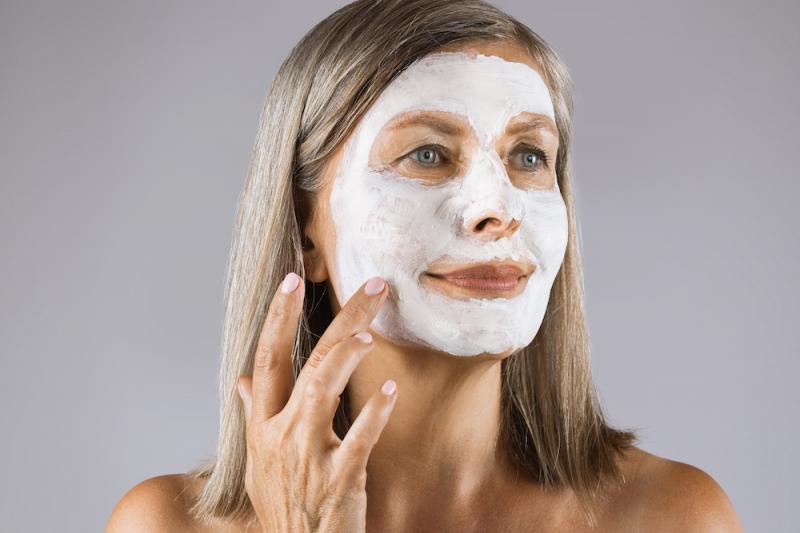 I first experienced the healing power of clay after a brush with stinging nettles. When nettles contact bare skin they inflict urticaria, a painful, itchy rash. Fortunately, nettles often grow near water, and I was able to find some fine mud and pack the afflicted area with it. This helped to stop the pain and ease the irritation quite quickly.
I first experienced the healing power of clay after a brush with stinging nettles. When nettles contact bare skin they inflict urticaria, a painful, itchy rash. Fortunately, nettles often grow near water, and I was able to find some fine mud and pack the afflicted area with it. This helped to stop the pain and ease the irritation quite quickly.
I didn’t make the connection that mud or clay could be used for anything else until much later when I got a letter from a woman who was upset because an herb company we both used had discontinued selling Redmond Clay. In her letter she shared two interesting stories about saving her husband's life using this clay.
Her husband worked in the woods and on one occasion he was bitten by a rattlesnake, and on another occasion started to develop a rash indicative of Rocky Mountain Fever after being bitten by a tick. On both occasions, she stuck him in a clay bath and according to her, it immediately helped. I wish I had the original letter so I could share the exact details of her experiences, but I’ve lost it. Nevertheless, her letter was what got me interested in studying clays as a healing agent.
Since then I've had a lot of my own experiences with the beneficial properties of clay and I keep Redmond Clay on hand for use in clay baths, packs, and poultices. Redmond Clay is a type of bentonite clay mined in Redmond, UT. And while my experience is with Redmond Clay, there are other places where you can get bentonite. So with that in mind let's take a closer look at the healing properties of bentonite.
Bentonite Clay
 Betonite is a fine clay formed from volcanic ash deposits. It typically forms when volcanic ash is weathered in seawater. It was given its name around 1890 by an American geologist, who found it in the Benton Formation.
Betonite is a fine clay formed from volcanic ash deposits. It typically forms when volcanic ash is weathered in seawater. It was given its name around 1890 by an American geologist, who found it in the Benton Formation.
Bentonite is formed from very fine-grained minerals that are layered like a deck of cards. It easily swells in water and can double in thickness when wet. Because it attracts water molecules, it easily disperses in water.
It has a negative electrical charge (alkaline charge) which causes it to soak up positively charged (acid) substances. Most toxins have a positive charge to them, which is the same as saying they act as free radicals and steal electrons. Bentonite's strong electromagnetic field attracts and holds onto the positive ions found in these substances and can help to detoxify petrochemicals, pesticides, and heavy metals. It can also absorb microbial endotoxins.
Bentonite for Drawing Baths
 The primary thing I’ve used Redmond Clay for is drawing baths. If you’ve ever had clay on your skin, you know how it dries it out. Just working in the clay soil in my garden leaves my hands feeling very dry and in need of a moistening hand cream. That’s because clay draws the oily substance (sebum) out of the sebaceous glands. Sebum keeps the skin moist. These glands also act as a backup system for the elimination of fat-soluble irritants like heavy metals and petrochemicals.
The primary thing I’ve used Redmond Clay for is drawing baths. If you’ve ever had clay on your skin, you know how it dries it out. Just working in the clay soil in my garden leaves my hands feeling very dry and in need of a moistening hand cream. That’s because clay draws the oily substance (sebum) out of the sebaceous glands. Sebum keeps the skin moist. These glands also act as a backup system for the elimination of fat-soluble irritants like heavy metals and petrochemicals.
My instructions for a drawing bath are as follows. Put one cup of bentonite clay into a tub of hot water and mix it in thoroughly. Don't worry, it won't create a thick paste and it easily washes down the drain after you're done. Soak in the bath for 15-20 minutes, keeping it as hot as can be comfortably tolerated. Afterward, take a shower using a natural Castile soap to cleanse the pores. These baths are very helpful for skin eruptive diseases like chicken pox, measles, and rashes, but I’ve also discovered they’re very helpful for detoxifying the body from heavy metals.
Bentonite for Heavy Metal Detox
I discovered how bentonite can help the body with heavy metals after a friend of mine developed a rash on her hands after teaching an aromatherapy class. When we were discussing what to do about it, I had an impulse to taste the rash on one of her fingers. (I know, I can be weird, but usually my intuition is very good, and it was in this case.) Her finger tasted metallic, so we decided the essential oils must have triggered her body into a heavy metal detox. I had her do a drawing bath with bentonite clay and it immediately helped. In fact, it only took two drawing baths, one day apart, to completely clear up the rash.
What was even more interesting is that two days later I developed a similar rash. It made me wonder if the metallic taste on her finger had created a homeopathic-like action that triggered a heavy metal detox in me as well. I took just one drawing bath and it cleared the rash up completely. Since that time I’ve recommended using drawing baths while taking formulas to help detoxify heavy metals and found them very helpful.
Clay Masks and Poultices
 This brings us to another great use for clay. When someone has acne, the sebaceous glands are getting inflamed, due to skin infections, rancid fats in the body, or other sources of irritation. They swell and plug up, forming pimples or zits. Clay masks are a great treatment for this. You mix the clay with enough water to make a muddy paste that will stick to the skin. You then apply it topically and allow it to sit on the skin until it starts to dry out. You then wash it off. (Again, I recommend a good Castile soap.) The clay will pull the oily substances and toxins out of the pores.
This brings us to another great use for clay. When someone has acne, the sebaceous glands are getting inflamed, due to skin infections, rancid fats in the body, or other sources of irritation. They swell and plug up, forming pimples or zits. Clay masks are a great treatment for this. You mix the clay with enough water to make a muddy paste that will stick to the skin. You then apply it topically and allow it to sit on the skin until it starts to dry out. You then wash it off. (Again, I recommend a good Castile soap.) The clay will pull the oily substances and toxins out of the pores.
You can also mix the clay with seaweeds (which have a drawing action, too, but also help moisturize the skin) and/or essential oils. Good oils to use are ones that help fight bacterial infections such as tea tree, cajeput, sandalwood, and eucalyptus. These packs can also be used over areas of the body afflicted with eczema, psoriasis, or other inflammatory skin diseases, but should be followed up with something to moisturize and soothe the skin, such as olive or coconut oil.
Clay can also be applied as a poultice to insect bites and stings or other irritations of the skin. It can be mixed with appropriate herbs (such as plantain) or essential oils, depending on the specific problem. Clay has also been used topically to help ease pain and swelling in arthritic joints.
Using Clay Internally
Bentonite clay is Generally Recognized as Safe (GRaS) for internal use. Internally, hydrated bentonite (clay suspended in water) is used rid the body of bacteria that cause food poisoning, viruses that cause stomach flu, toxins, and parasites. Parasites are unable to reproduce in the presence of clay.
Hydrated bentonite is one of the ingredients in a cleansing program called Ivy’s Recipe, developed by Ivy Bridge of Tustin, California. It consists of putting the following in a large glass of water and drinking it first thing in the morning at least 30 minutes before breakfast.
- 2 Tbsp. aloe vera juice
- 2 Tbsp. liquid chlorophyll
- 1 heaping tsp. of a psyllium-based fiber blend
- 1 tsp. of Hydrated Bentonite
You need to take this with cascara sagrada or a Stimulant Laxative Formula containing cascara and drink plenty of water to keep your bowels moving properly. You can also take an alterative or blood-purifying formula with herbs like dandelion, burdock, red clover, and yellow dock at the same time. It’s a great detoxification program.
Clay in the Garden
 Bentonite can be used in the garden. There are some suggestions for ways to use it on the Redmond Life website. While I haven’t used bentonite itself in the garden, bentonite is in a family of clays known as montmorillonite, which I have used. Montmorillonite clays are typically minerally rich and are leached to create colloidal mineral supplements. These clays can be used to minerally enrich a soil that has been depleted by chemical agriculture. By combining them with organic matter, the fungi and bacteria in the soil will make the minerals available to the plants, which will not only make the plants healthier, it will also increase the nutritional density of the food you’re growing.
Bentonite can be used in the garden. There are some suggestions for ways to use it on the Redmond Life website. While I haven’t used bentonite itself in the garden, bentonite is in a family of clays known as montmorillonite, which I have used. Montmorillonite clays are typically minerally rich and are leached to create colloidal mineral supplements. These clays can be used to minerally enrich a soil that has been depleted by chemical agriculture. By combining them with organic matter, the fungi and bacteria in the soil will make the minerals available to the plants, which will not only make the plants healthier, it will also increase the nutritional density of the food you’re growing.
I’ve added montmorillonite to garden soil and I’ve also used colloidal minerals as part of a foliar spray to get my plants to grow better. Here’s a recipe I’ve used as a foliar spray. Combine the following with one gallon of water
- 1 teaspoon calcium carbonate powder dissolved in two tablespoons of household vinegar
- 1 teaspoon kelp emulsion
- 1 teaspoon colloidal minerals (unflavored plain colloidal minerals, the cheaper the better)
- 1 teaspoon Nature’s Fresh Enzyme Spray or equivalent
Mix this thoroughly and spray it on your vegetable and fruit plants (e.g. tomatoes, peppers, squashes, grapes) until the leaves are drenched. It’s best to do this in the evening so the leaves aren’t exposed to the hot sun afterward. If you do it once a week you can expect healthier plants and higher yields. If you’re having problems with plant diseases you can add 1 teaspoon of colloidal silver.
Clay for Pest Control
I also found clay to be a great product for pest control. Although bentonite has been used, I used kaolinite, a soft clay made of layers of silicate. It’s also called China clay because it’s used to make porcelain. I mixed the clay with water (about one to two cups per gallon) and added a teaspoon of neem oil. I sprayed my apple tree with it and it eliminated the problem I had with coddling moths. Before I did this almost all of my apples had wormholes. Afterward, practically none did. I also found it great for keeping the squash bugs away.
Insects don’t like this silica-based clay for the same reason they don’t like diatomaceous earth. The silica forms tiny spikes which poke holes in their exoskeletons so they dehydrate. It’s not poisonous to pets or people, so it’s a great nontoxic solution for pest control.
I hope this article has opened your mind to the many possibilities of using clay as a healing agent. It's one of the many healing things nature offers us.
Downloads
Steven's Articles
-

-
Barberry and Healthy Personal Boundaries
A thorny shrub for fighting infections and supporting…
December
-

-
The Evidence for Berberine
A yellow alkaloid found in traditional infection-fighting…
-

-
The Sensible Use of Caffeinated Herbs
Kola nuts, guarana, and yerba mate and other herbs…
-

-
The Health Benefits and Problems with Coffee
This popular caffeinated beverage can be beneficial…
October
-

-
Understanding Caffeine & Cellular Adaptation
Preserving the power of caffeine's buzz and the…
September
-

-
Horseradish
A pungent spice for aiding protein metabolism…
-

-
Banaba or Crepe Myrtle
A beautiful tree from Southeast Asia whose leaves…
August
-

-
Monkeyflowers
Flower essences to help see ourselves more clearly…
-

-
Mariposa Lilies
Strengthening the bond between mother and child…
-

-
The Noble Bay Leaf
A common kitchen herb for aiding digestion and…
-

-
Epimedium: Horny Goat Weed
A circulatory stimulant and kidney yang tonic…
July
-

-
The Medicinal and Nutritional Benefits of Apricots
A nutritious fruit and valuable medicinal seed for coughs
-

-
Dogwoods
Asian dogwood is used to stop excessive discharge,…
June
-

-
Neem: The Village Pharmacy
A popular Ayurvedic remedy for dental and immune…
-

-
Spilanthes: The Toothache Plant
A traditional remedy for teeth and gums, as well…

